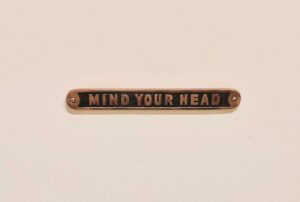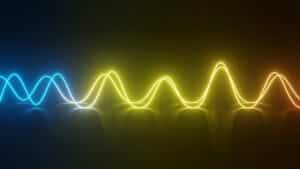Music at 528. Hz is said to have healing powers, earning it the nickname ‘Miracle Frequency’. This article dives into why music 528 Hz is special and how it can improve your well-being and creativity.
Understanding 528 Hz: The Miracle Frequency

Tracing its origins to ancient times, the 528 Hz frequency was a key component of Gregorian chants and employed in spiritual ceremonies for its reputed therapeutic attributes. Its historical application in sacred contexts underscores the profound impact it has been believed to have on health and well-being. Dubbed the “Miracle Frequency” and “Love Frequency,” 528 Hz is celebrated for fostering an intense sense of tranquility and transformative healing.
Within the realm of music theory, 528 Hz forms part of the Solfeggio scale—a series of frequencies said to be cosmically connected, nurturing creativity and fostering harmony. The Solfeggio frequencies are widely recognized for their potential restorative effects that can beneficially influence our physical well-being and emotional state. Experiencing music calibrated to a frequency like 528. Hz could induce perceptible alterations in your mood or energy level, creating an impression that each note plays a specific role in harmonizing your mental and corporeal existence.
To fully grasp why 528 Hz holds such significance necessitates recognizing not only its ancestral relevance but also acknowledging how it functions within musical frameworks. It stands apart from other tones by providing access to deeper engagement with our environment. As you continue exploring this topic, greater insights will unfold regarding scientific explanations underpinning its powerful impact alongside ways you might utilize this particular vibration for enhancing personal wellness or facilitating recovery processes.
The Science Behind 528 Hz

The moniker “Love Frequency” was unearthed once again in the 1970s by Dr. Joseph Puleo, who recognized its potential to facilitate healing and transformation. It has been discovered that music tuned to the frequency of 528 Hz can enhance DNA’s ability to absorb ultraviolet light, which is essential for maintaining healthy DNA and may lead to significant reductions in cortisol levels, thus lowering stress. Engaging with music at this frequency could assist your body’s self-repair processes on a cellular level, fostering overall health. Its efficacy has been confirmed.
To influence DNA repair mechanisms, it has been demonstrated that listening to music at a frequency of 528 Hz can improve cognitive functions such as mental sharpness and attention while helping alleviate feelings of anxiety and encouraging emotional stability. Imagine beginning your day enveloped in tranquility with an unclouded mind courtesy of the harmonious vibrations from 528 Hz frequencies. Research highlights that this particular frequency induces greater decreases in stress-related biomarkers than other frequencies like those produced by tuning instruments traditionally set at 440 Hz.
Experiencing tunes calibrated at the optimal vibration rate of 528 hz doesn’t just ameliorate sleep patterns but also nurtures cellular rejuvenation – no surprise then why an increasing number of us are drawn towards incorporating these sounds into our daily practices for their comprehensive therapeutic advantages across physicality emotionality cognitivity alike.
How 528 Hz Music Benefits Meditation

The experience of meditating with 528 Hz music can significantly amplify relaxation, alleviate stress, and foster healing. This frequency’s tranquil effects are beneficial in processing and releasing negative emotions, which aids emotional restoration. As the harmonious tones cascade around you, tension may dissolve more readily, making it easier to access a deeper level of meditation.
In essence, the use of 528 Hz music during meditation contributes to a more profound state by assisting individuals in shedding their stress and tension for an enhanced healing journey. Visualize yourself descending into serenity where concerns fade into oblivion leaving behind only a pervasive sense of calmness and well-being—that is the enchantment offered by employing this frequency as part of your meditative routine.
Elevate your meditative practices even By introducing Hina Theta Sleep Music—a track specifically crafted for enriching your reflective sessions. We will explore Hina’s unique aspects including its track duration, available file formats, along with any special promotions on offer in subsequent sections.
Introducing Hina Theta Sleep Music
Hina is considered the most serene composition in the theta sleep music collection, crafted to evoke a state of serenity and relaxation. The harmonious sound of this track makes it perfect for use during meditation practices. As you listen to Hina while meditating, you will discover that it aids in dissolving tension and facilitates a journey into profound tranquility.
As part of the same series, Hina stands out as exceptionally soothing, cultivating an ambiance conducive to peaceful reflection. Its delicate musical notes weave through your awareness like threads, forming an oasis where solace and calm can be sought. Suitable for both experienced practitioners and newcomers alike, Hina serves as a valuable addition by providing a tranquil audio backdrop for meditation sessions.
Immersing yourself in the sounds of Hina feels like being enveloped in comforting auditory warmth. Each note resonates with purposeful harmony aimed at guiding listeners towards inner stillness. Available on various digital outlets such as YouTube, where its calming qualities have earned commendations.Hina awaits those who seek its restorative embrace.
Track Lengths and File Types
The Hina music collection presents a trio of sound durations to choose from, accessible in both MP3 and WAV audio formats. Depending on your desire for a brief engagement or an extended relaxation session, you have the option to select from tracks that are 26 minutes, 40 minutes, or 66 minutes long. This range caters to various preferences and requirements within your meditation routine.
By offering musical pieces in both MP3 and WAV formats, it’s guaranteed that exceptional auditory quality is available regardless of which format aligns with your needs. The more compact MP3 files enable straightforward playback across numerous devices while the larger WAV files deliver superior broadcast-level music quality for a deeply engrossing acoustic encounter.
These alternatives ensure that you can experience the calming influence of Hina through whichever medium suits you best—embrace flexibility and tailor your listening journey according to personal taste and technological convenience.
Special Offers and Discounts
Hina has put together a comprehensive package that features a selection of songs at an economical price. The Complete Hina Bundle is tailored to provide full access to her soothing tunes, granting considerable savings for those desiring to delve deeply into the music.
For individuals who pass on their enjoyment of Hina’s melodies, there are referral discounts in place. By suggesting a friend explore the serene soundscapes created by Hina, you not only aid them in experiencing its relaxing qualities, but also earn yourself a modest discount as thanks.
This initiative presents an excellent opportunity to share the genuine calmness and heartfelt serenity intrinsic to Hina’s compositions while simultaneously reaping additional rewards. Engaging in this allows for an enriched experience with her work. Here is an in-depth explanation about this “Hina” at https://orchestralmeditations.com/hina-theta-sleep-meditation-personal/
Tuning Instruments to 528 Hz

Enhancing the resonance and elevating the sound of instruments can be achieved by tuning them to a 528 Hz frequency. To ensure precision in reaching this key frequency, musicians should utilize a dependable tuning apparatus or application. When it comes to pianos, one would tune the A4 key specifically to 528 Hz and then carefully adjust each remaining key based on harmonics, thus guaranteeing that the whole instrument vibrates with uniformity at this chosen frequency. This alignment fosters an atmosphere of balance and tranquility throughout musical performances.
For stringed instruments such as violins or guitars, meticulous adjustment of certain strings is crucial to achieve harmony with the 528 Hz vibration. On a violin, begin by setting your E string accurately to 528 Hz before aligning other strings accordingly. With guitars, start with fine-tuning your sixth E string, tuned precisely at 528 Hz, followed by calibrating all remaining strings relative to it through established chord patterns frequently used in music composition. Adhering strictly to these steps will ensure that every aspect of those instruments are synchronized perfectly under this special harmonic framework.
Engaging in music creation using instruments set at a 528 hz pitch results not only in deeper tonal quality but also lends improved dynamism during live performance or while composing melodies solo or within group settings—heightening both personal creative expression as well as potentially forming more impactful connections between performer(s) and listeners alike due to its uplifting nature inherent within said musical scale.
Practical Uses of 528 Hz Music

The 528 Hz frequency is renowned for its capacity to boost brain activity and incite creativity, thereby enhancing inspiration and the ability to solve problems. This property renders it a valuable resource for individuals engaged in creative fields such as artists, writers, and those seeking innovative breakthroughs. By integrating 528 Hz sound into your routine, you can unlock unprecedented degrees of inventiveness and seamless productivity.
The utility of music tuned to 528 Hz extends beyond mere creative endeavors. It’s also employed within therapeutic contexts to foster emotional stability and physical health. Sound healing practitioners commonly incorporate this particular frequency into their sessions due to its therapeutic advantages.
Employing this frequency can aid in establishing an atmosphere conducive to relaxation or bolstering focus and efficiency during work or academic studies—setting a foundation that is closely aligned with achieving peak performance necessary for success.
Creating Your Own 528 Hz Music
Digital audio workstations such as Logic Pro and Ableton Live provide musicians with the means to craft music at a 528 Hz frequency by finely adjusting track pitches. These platforms offer meticulous tuning capabilities, enabling the creation of compositions that vibrate specifically at 528 Hz. By employing dedicated tuning files or MIDI commands, one can calibrate software instruments and synthesizers to resonate with this particular frequency.
Melodyne is another useful tool for artists aiming to tune their recordings to 528 Hz by modifying conventional pitch standards and temperament systems. The software simplifies the process of retuning pre-existing tracks so they align harmoniously with the target frequency of 528 Hz. Microtonal plug-ins like OddSound MTS-ESP and Infinitone DMT facilitate precise calibration for an array of musical tools and digital interfaces.
Live performers who are keen on integrating microtonality into their acts can employ isomorphic MIDI controllers which support performance in expanded scales encompassing up to two dozen notes — a feature particularly valuable in playing pieces composed in frequencies like 528 Hz. Utilizing these innovative methods allows musicians both within studios or onstage environments to delve into creating compelling renditions grounded in the reputedly restorative essence encapsulated by the vibrations emanating from music pitched at a healing frequency of 528 hz.
Comparing 528 Hz with Other Frequencies
The 528 Hz sound frequency is often described as the “love frequency,” and it’s believed to play a significant role in both sound healing practices and expanding consciousness due to its unique mathematical relationships. Within the range of solfeggio frequencies, known for their therapeutic effects, 528 Hz stands out for fostering emotional stability and physical health. It’s equivalent to the note ‘Mi’ on the Solfeggio musical scale, emphasizing its importance in music.
When we compare the typical tuning standard of A4 at 440 Hz with that of 528 Hz, intriguing contrasts emerge. To align a piano with 528 Hz tuning, one would need to alter the A4 note from its conventional pitch of approximately 440 hz up slightly nearer to roughly 444 hz causing the C5 pitch to come closer near exactly or nearly around 518hzThis nuanced change can significantly influence not only how resonant sounds are made, but also affect an audience’s listening experience deeply.
While most instruments are traditionally tuned using the commonly accepted benchmark frequency, which sits firmly established among musicians at four hundred forty Hertz (440Hz), adopting themore unconventional yet specific vibration rate of five hundred twenty-eight Hertz(58Hz) can unearth distinct advantageous properties.These may potentially enhance one’s well-being, which serves when incorporated into a mental repertoire thus setting five hundred dollars aside other vibrations.Added knowledge and application concerning this particular genre enables composers and sound artists alike produce compositions teeming with beauty while simultaneously promoting wellness harmony within listeners themselves.
Summary
To summarize, the “Miracle Frequency” or “Love Frequency,” commonly referred to as 528 Hz, possesses a well-established historical and scientific foundation that corroborates its myriad of advantages. This frequency not only promotes DNA vitality, but also alleviates stress and bolsters cognitive performance. The utilization of 528 Hz music spans various practices including meditation, therapy, and fostering creativity—offering a comprehensive solution for both personal enhancement and recuperation.
By integrating 528 Hz music into your daily routine—be it through attentive listening sessions, meditation practices or even crafting your own musical pieces—you stand to unlock the regenerative essence inherent in this distinct frequency. It is our aspiration that this guide has shed illuminating perspectives alongside actionable suggestions for you to exploit the wholesome effects of 528 Hz music. Surrender yourself to the enchanting qualities of 528 Hz. Allow it to infuse tranquility and synchrony into every aspect of your existence.
Frequently Asked Questions
What is Hina described as in the theta sleep music series?
Hina is the calmest piece in the theta sleep music series, perfect for relaxing your mind.
Give it a listen for some serious chill vibes!
What does the moon goddess Hina offer to listeners?
Hina offers a sense of calm and peace, soothing both the sea and our hearts.
It’s like finding a cozy spot on a beach under the moonlight.
How many track lengths are available for the Hina music?
There are three track lengths available for Hina music.
What file types are available for the Hina tracks?
You can grab Hina tracks in either a compressed MP3 format or a broadcast quality WAV file.
What happens when the referred friend places an order?
When your referred friend places an order, you’ll score a 25% discount code.
It’s a nice little perk for spreading the word!



